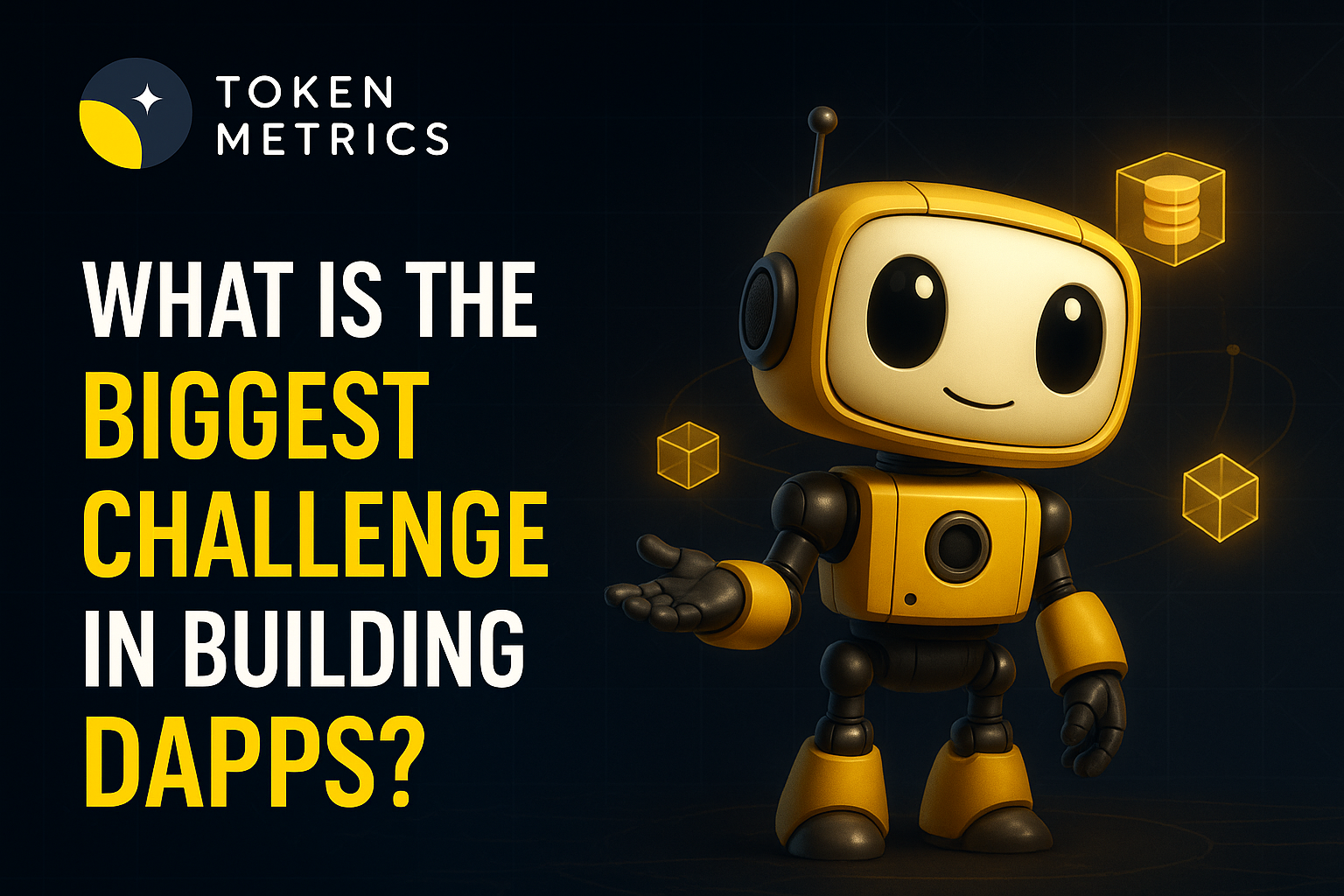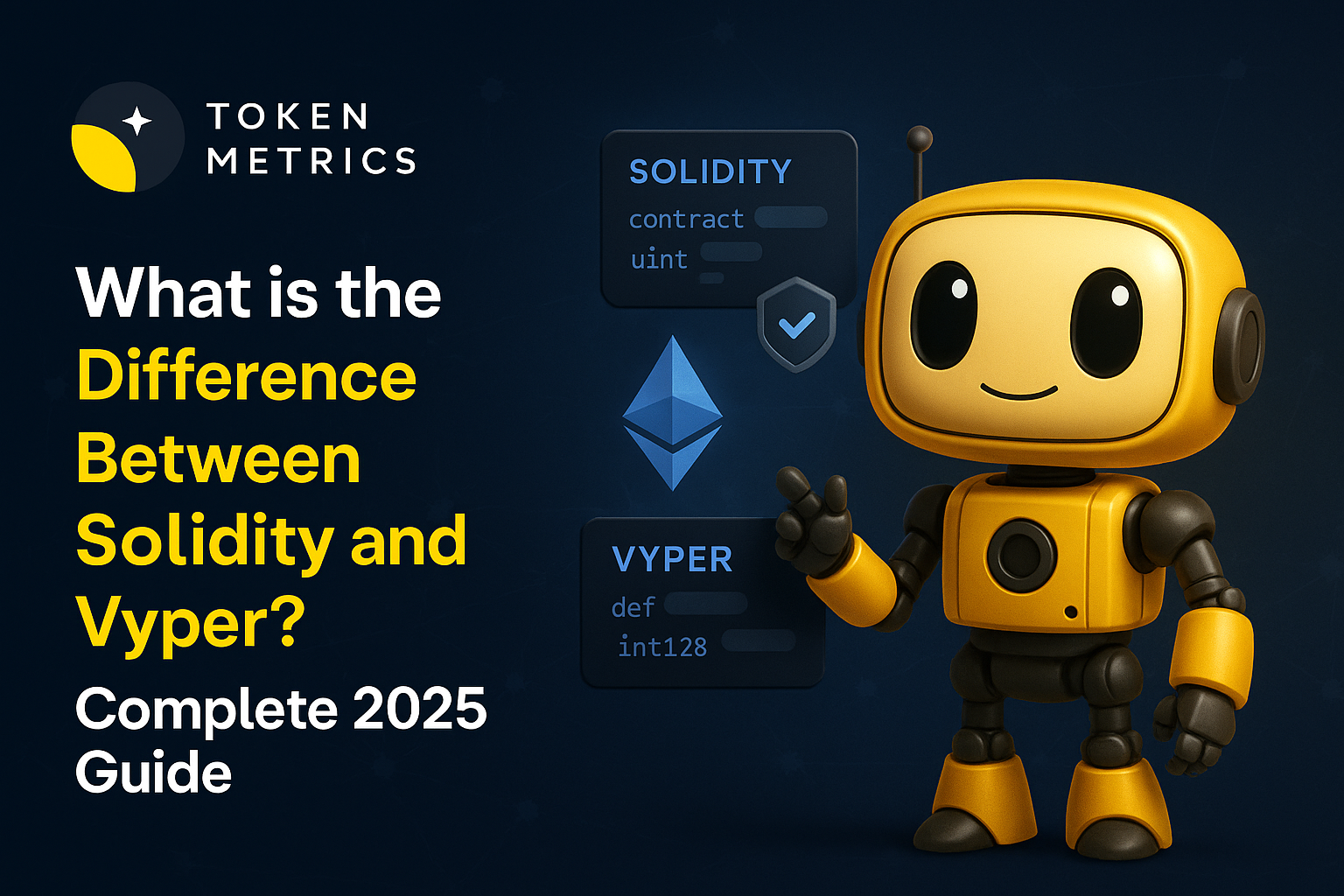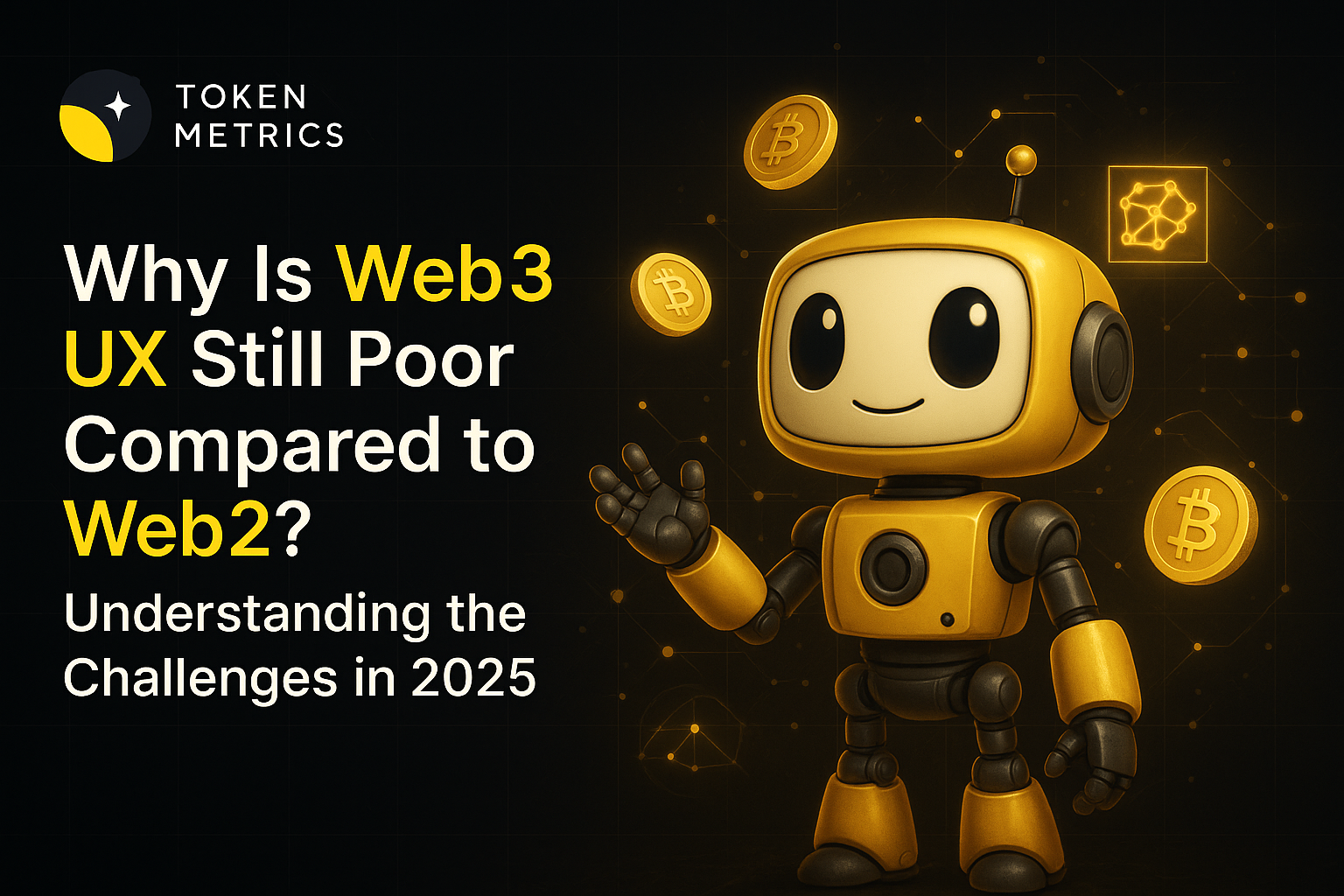
Advanced Trader's Secret Weapon: Core Index Position with Satellite Trading Strategy

Professional traders know something that most retail investors miss: the path to consistent crypto returns isn’t about hitting every moonshot or timing every swing perfectly. It’s about combining disciplined, systematic exposure with strategic, high-conviction plays, all guided by a clear trading plan.
Enter the core-satellite strategy—a portfolio construction approach used by institutional investors in traditional markets for decades and now adapted by sophisticated crypto traders to balance returns and risk. When executed with the right tools, such as essential indicators and analysis platforms, this approach can improve risk-adjusted outcomes while freeing up mental bandwidth for the trades that truly matter.
What Is the Core-Satellite Strategy?
The core-satellite approach divides a portfolio into two distinct components, each serving a specific purpose:
The Core (60–80% of capital): A stable, diversified position designed to capture broad market exposure with minimal active management. This is the foundation—steady, rules-based, and disciplined—focused on long-term growth and stability. The core exists to participate in major market moves while mitigating the impact of catastrophic individual asset failures.
The Satellites (20–40% of capital): Active trading positions based on high-conviction theses, technical setups, or specific catalysts. These are tactical plays where traders leverage analysis, timing skills, and market insights to seek outperformance.
The strength of this structure is that it removes the pressure to be right about everything. The core ensures you’re never completely out of the market during explosive rallies, while satellites provide the flexibility to take calculated risks on targeted opportunities.
Why Advanced Traders Need a Disciplined Core
If you’re an active crypto trader, you may recognize the paradox of skill: the better you get at identifying opportunities, the more tempting it becomes to deploy most or all of your capital into high-conviction plays. That approach carries material risks:
- Opportunity Cost Risk: With a fully allocated set of 3–5 positions, a sector rotation can cause you to miss broader market movement. A DeFi position doesn’t benefit when AI tokens suddenly rally.
- Emotional Exhaustion: Managing a fully active portfolio requires constant monitoring and judgment. Every position feels high-stakes, creating decision fatigue that can degrade trading quality over time. A lack of discipline often leads to impulsive decisions and avoidable mistakes.
- Drawdown Exposure: Concentration amplifies both gains and losses. One or two wrong calls can set back months of progress, even with a solid win rate, illustrating how easy it is to lose money without proper risk controls.
- Rebalancing Complexity: Attempting diversified exposure through active management means constant rebalancing, transaction costs, and execution slippage—on top of finding and executing your best ideas.
A disciplined core helps address these issues by providing a stable foundation that requires minimal intervention while maintaining broad market participation.
Token Metrics: The Platform Powering Smart Traders
This is where Token Metrics can transform the workflow. As a crypto trading and analytics platform, it offers institutional-grade research combined with actionable execution tools. As a comprehensive trading hub, it integrates advanced charting, indicator support, and streamlined execution to support effective strategies.
What sets Token Metrics apart:
- AI-Powered Asset Ratings: Proprietary algorithms analyze thousands of cryptocurrencies across technical indicators, on-chain metrics, development activity, social sentiment, and fundamentals—producing quantitative ratings designed to cut through noise.
- Comprehensive Market Signals: Real-time bull/bear regime detection using signal processing that blends price action, volatility, and correlation structures—refined through years of testing.
- Research Infrastructure: Deep-dive reports on emerging narratives, sector rotations, and specific token analysis from a team combining traditional finance expertise with native crypto insights.
- Portfolio Tools: Watchlists, performance tracking, and infrastructure to manage positions efficiently.
Even with strong analysis, execution matters. The platform’s latest innovation—automated index products—gives advanced traders a disciplined core position to complement active trading.
TM Global 100: The Disciplined Core Position
The TM Global 100 Index is designed to serve as the core in a core-satellite strategy. Key considerations for advanced traders include position sizing, risk management, and consistent rules-based exposure.
Automatic Broad Exposure
The index holds the top 100 cryptocurrencies by market capitalization, rebalancing weekly. This means:
- You participate in the next category winner automatically.
- Sector rotations can work in your favor—when flows shift to DeFi, AI, gaming, or infrastructure, you’re positioned in leaders.
- New tokens entering the top 100 are added automatically; declining projects are removed. Assets within the index are actively traded to maintain exposure with disciplined, systematic management.
Intelligent Risk Management
The regime-switching mechanism implements what many traders intend to do but often struggle with under pressure: reducing exposure when conditions deteriorate.
When Token Metrics proprietary signals detect bearish conditions, the index moves to stablecoins, systematically selling assets to help preserve capital during downturns. When bullish conditions return, it redeploys to the top 100. This systematic approach removes emotion from core management.
Zero Maintenance Required
Advanced traders can focus on identifying specific opportunities and executing tactical trades. TM Global 100 runs autonomously—no manual rebalancing, no constant monitoring, no gas fees from continual adjustments.
Complete Transparency
Holdings are visible at any time through real-time treemaps and tables, with transaction logs showing every rebalance. You maintain full visibility while outsourcing execution.
Technical Analysis and Satellite Trading
Technical analysis is a cornerstone of active trading, equipping traders to interpret historical price behavior and anticipate potential trends. By mastering these tools, traders can build structured strategies that use patterns and indicators to identify potential entry and exit zones.
Moving averages help smooth price data to reveal trend direction and potential reversals. Combined with candlestick patterns—visual representations of price action that can signal shifts in sentiment—these tools can help traders spot opportunities and manage trades with greater confidence.
For newer traders, understanding how to interpret price charts and analyze real-time data is essential. A well-structured trading course can accelerate learning, covering support/resistance, key patterns, and risk management practices in the stock market and other asset classes.
Ultimately, technical analysis supports informed decisions grounded in objective data rather than emotion. With continuous refinement and discipline, traders can navigate volatility, manage risk, and work toward long-term trading consistency.
With 60–80% of capital deployed in the TM Global 100 core, attention can shift to satellites. This is where the Token Metrics research platform becomes a competitive advantage:
- High-Conviction Thesis Plays: Use AI ratings and research reports to surface assets with strong fundamentals that haven’t reached top-100 status yet. Apply appropriate position sizing across markets such as crypto, forex, commodities, and stocks where relevant.
- Technical Setups: Monitor technical tools to identify short-term opportunities. With a core providing baseline exposure, trade breakouts, oversold bounces, and momentum signals. Use moving averages and volume for confirmation and consider higher timeframes for signal reliability.
- Narrative Rotations: When research identifies emerging narratives (e.g., new Layer 2 launches, evolving regulation, or technological breakthroughs), use satellites to overweight those themes.
- Event-Driven Trades: Major unlocks, protocol upgrades, partnership announcements, or macro events can create tactical windows. A core position provides stability while satellites target catalysts. For example, moving averages and volume on a price chart can help gauge momentum after an event and inform potential exit timing.
Consistent practice is essential to master these techniques and improve trading performance.
Implementation: A Practical Framework
Here is a common way sophisticated traders put the approach into practice:
Portfolio Allocation:
- 70% in TM Global 100 (core position)
- 30% in 5–8 satellite positions (each approximately 3–6% of total capital)
Position Management:
- Core: Set and review periodically to ensure allocation hasn’t drifted significantly.
- Satellites: Active management with clearly defined entry/exit criteria, stop losses, and profit-taking rules.
Rebalancing Rules:
- If satellites outperform significantly, skim profits and move excess back to the core.
- If satellites underperform but the core maintains value, there is dry powder from stable portfolio value.
- Maintain a rough 70/30 split, allowing about 10% variance before rebalancing.
Avoiding common errors—such as improper position sizing or neglected rebalancing—helps support long-term consistency.
Risk Management:
- The core position includes downside considerations via stablecoin switching.
- Satellites use strict stop losses (often 15–25% depending on volatility).
- No single satellite exceeds roughly 8% of total portfolio exposure.
Track Performance: Regularly monitor results to identify what’s working and refine the plan.
Real-World Edge: Time Arbitrage
One of the most underrated benefits of the core-satellite approach is time arbitrage. By reducing day-to-day portfolio maintenance, you can reallocate time and focus to high-impact work:
- Conduct deeper research on satellite opportunities.
- Wait for higher-quality setups instead of forcing marginal trades.
- Maintain emotional equilibrium during volatility.
- Preserve decision-making energy for critical moments.
Professional traders understand that attention is finite. The core-satellite structure helps optimize how it’s spent and can support a disciplined approach to long-term portfolio building.
Getting Started
Implementing this strategy with Token Metrics is straightforward:
- Join the TM Global 100 waitlist at tokenmetrics.com/indices/global-100.
- Access the Token Metrics research platform to identify satellite opportunities using AI ratings, market signals, and analyst reports.
- At launch, deploy a core allocation to TM Global 100 via the one-click embedded wallet once your account is set up and funded.
- Construct 5–8 satellite positions using Token Metrics analytics.
- Track performance through the unified dashboard with real-time P&L and transaction history.
Education is key to successful trading. Users can access educational videos and tutorials to learn more about the platform, trading strategies, and technical analysis—helping both beginners and advanced traders make informed decisions. The embedded self-custodial wallet means you maintain control of funds while accessing institutional-grade index management.
The Bottom Line
Many market participants overcomplicate strategies or follow the crowd. Advanced traders benefit from smarter infrastructure. The core-satellite framework—supported by the Token Metrics analytics platform and the TM Global 100 Index—offers systematic market exposure while preserving the flexibility to apply a trading edge where it matters most.
Build a disciplined core, express high-conviction ideas as satellites, and let a rules-based process help shape outcomes over time. If you have questions, explore additional articles and engage with the community—share experiences and ask for feedback. Click here to get early access to TM100 indices at Token Metrics.
Enhance Your Trading with Token Metrics
Token Metrics offers real-time prices, trading signals, and on-chain insights to help you make informed decisions. Start Trading Smarter Today
FAQs
What is a core-satellite crypto portfolio?
It’s a structure that combines a rules-based core for broad market exposure with smaller, actively managed satellite positions targeting specific opportunities, themes, or catalysts. The goal is balance and discipline.
How does TM Global 100 fit into this approach?
TM Global 100 functions as a rules-based, diversified core that rebalances weekly and can shift to stablecoins in bearish regimes, allowing traders to focus on active satellite ideas while maintaining market participation.
What tools help manage risk in satellite positions?
Common practices include predefined entry/exit criteria, stop losses sized to volatility, position size limits, and regular performance reviews. Objective rules help reduce emotional decision-making.
Why is technical analysis useful for satellites?
Technical analysis provides structured ways to interpret price action, trends, and momentum. Tools like moving averages, volume, and candlestick patterns can help time entries and exits with greater consistency.
How often should a portfolio be rebalanced?
Many traders monitor allocations periodically and set thresholds (for example, allowing a variance around a target split) before rebalancing. The core’s systematic processes can reduce maintenance demands.
Does this framework apply beyond crypto?
Yes. The core-satellite concept originated in traditional markets and can be adapted to asset classes such as equities, commodities, and forex, depending on tools, liquidity, and risk tolerance.
Disclaimer
This content is for educational and informational purposes only and should not be interpreted as investment, financial, legal, or tax advice. Digital assets are volatile and carry risk, including potential loss of capital. Always conduct independent research and consider consulting a qualified professional before making financial decisions. References to specific indices, platforms, or tools are for illustration and do not constitute endorsements or recommendations.

.svg)

Create Your Free Token Metrics Account

.png)




%201.svg)
%201.svg)


%201.svg)










.svg)




.png)